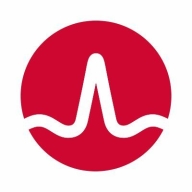

DX Spectrum and LogicMonitor are key competitors in the network monitoring domain. LogicMonitor has the edge due to its user-friendly dashboards and visualization capabilities, making data interpretation straightforward.
Features: DX Spectrum is distinguished by its scalability, effective fault management, and comprehensive network topology views, offering deep infrastructure insights and robust SNMP and device integration. LogicMonitor shines with intuitive dashboards and visualization tools, simplifying data interpretation. Its Google Maps widget is also a valuable asset for geographic network visualization.
Room for Improvement: DX Spectrum needs a user interface overhaul and simplification in configuration. Its reliance on Java is a usability hurdle, and users seek enhanced reporting and better third-party integration. LogicMonitor should focus on advancing reporting capabilities and improving topology mapping. Both solutions would benefit from scalability and customization improvements, yet LogicMonitor is already progressing in automation and API integrations.
Ease of Deployment and Customer Service: DX Spectrum's on-premises nature is engineered for larger networks but entails a more elaborate setup. LogicMonitor is flexible, supporting public, hybrid, and on-premises cloud scenarios. DX Spectrum's customer service reviews are mixed and region-specific, with inconsistent technical support, whereas LogicMonitor is highly rated for customer support, praised for prompt and quality service.
Pricing and ROI: DX Spectrum is perceived as costly, mainly for smaller organizations, due to high licensing and setup expenses, but it promises significant ROI through infrastructure savings. LogicMonitor, while not the cheapest, is seen as delivering good value for money, with its scalable licensing model allowing flexibility, offering notable ROI with customer satisfaction and efficiency gains in resource allocation.
The return is more of value and savings in preventing costly downtime, making the savings of about $60,000 which we would have lost without LogicMonitor, and in IT staff efficiency, we save approximately 15 hours a week.
I can definitely notice a difference in our posture, uptime, and ability to solve problems and resolve outages much quicker since we have had LogicMonitor in place.
Broadcom technical support is very good.
Customer support is on point and very well trained.
Customer support is good, but escalations within customer support are not so good.
The product mostly just works without issues.
They are not licensed, so you could deploy one collector or 1,000 collectors for the same cost.
LogicMonitor scales well
It is very stable. I have never seen LogicMonitor itself go down.
Currently, they appear as pop-up messages, but I would prefer having alarm messages shown as a scrolling bar at the taskbar for easier visibility.
The event management should have more deduplication and alert correlation and check the bidirectional communication with ServiceNow.
I wish the user interface would be customizable to allow users to create personal context-specific workspaces to hide irrelevant data, rather than trying to have a one-size-fits-all interface.
The container monitoring seems to be really behind compared to some bespoke cloud-native monitoring solutions that are designed around Kubernetes, containers, and ephemeral environments.
LogicMonitor can be improved by having more meetings with customers to find out what they really need.
The price of DX Spectrum is not competitive when compared to other solutions, such as SolarWinds.
I experienced no issues with pricing, setup cost, and licensing; it was very transparent, and the licensing model is very clear and easy to understand.
The interface has the needed configuration for visualization, and it's effective in providing a complete diagram of network links and connections across various stations globally.
DX Spectrum uses an SNMP Trap to accept all the details, especially for device monitoring of faulty devices, allowing me to use Spectrum effectively.
The dynamic alerting and root cause analysis have helped us fix issues before they cause a full-blown outage or degrade performance for end users.
I wrote a custom event source which queries the API periodically. It looks for new entries into our cage, and if it finds one, it creates a LogicMonitor alert that gets delivered to all proper stakeholders.
LogicMonitor has expanded our view of our systems and has reduced our mean time to resolution, as now engineers that work on specific issues are able to very quickly identify what the cause is.
| Product | Market Share (%) |
|---|---|
| DX Spectrum | 0.9% |
| LogicMonitor | 2.1% |
| Other | 97.0% |


| Company Size | Count |
|---|---|
| Small Business | 26 |
| Midsize Enterprise | 19 |
| Large Enterprise | 88 |
| Company Size | Count |
|---|---|
| Small Business | 11 |
| Midsize Enterprise | 10 |
| Large Enterprise | 9 |
DX Spectrum is a complete event and fault management system for network operations teams. The tool provides powerful capabilities for managing your dynamic, complex IT infrastructure, which includes physical, virtual, and cloud environments.The technology allows you to manage and optimize the infrastructure and the professional services that operate on top of it. DX Spectrum is a unified platform that helps your company enhance network service levels while lowering monitoring costs.
DX Spectrum has intelligent event correlation and root-cause analysis capabilities. It can pinpoint the precise components that are causing issues with availability and network settings. Reports and dashboards can be customized with role-based views. Change management solutions can also be used by teams to govern, track, and remediate changes across network devices.
DX Spectrum can identify multi-technology and multi-vendor stacks, as well as new software-defined networks (SDNs). It supports Multicast, MPLS, VPN, and VRF, among other routing protocols and technologies.
DX Spectrum Features
DX Spectrum has many valuable key features. Some of the most useful ones include:
DX Spectrum Benefits
There are many benefits to implementing DX Spectrum. Some of the biggest advantages the solution offers include:
Reviews from Real Users
DX Spectrum stands out among its competitors for a number of reasons. Two major ones are its robust root cause analysis and its event correlation tool. PeerSpot users take note of the advantages of these features in their reviews:
Umair A., Enterprise Solutions & Services Head at Duroob Technologies, writes of the product, “It covers networks very well. It has all the capabilities that you're looking for when it comes to monitoring. Spectrum is great for root cause analysis. It has excellent correlation event management. Spectrum's stability and scalability are also amazing. If you have a CA Service Desk, then it can be integrated so that if you have open tickets they can be closed automatically.”
Itarchit, an IT Architect at a comms service provider, notes, “The most valuable feature is the event correlation mechanism. I also like the product's multi-customer approach.” He adds, “We haven't seen a better product. Overall, I am happy with this solution. Based on the current market, I would rate DX Spectrum a nine out of ten.”
LogicMonitor offers flexible IT monitoring with customizable dashboards and robust alerting capabilities. It integrates seamlessly with third-party apps like ServiceNow and provides a single-pane view for diverse IT environments, aiding in proactive issue resolution and enhancing operational efficiency.
LogicMonitor stands out with its capability to monitor diverse infrastructures including Cisco Voice systems, data centers, and virtual environments. Supporting servers, storage, networking devices, and applications, it provides seamless integration with cloud services like AWS and Azure. Users leverage its scalability and flexibility, benefiting from dynamic thresholds, anomaly detection, and detailed visualization. All these features contribute to improved management of IT assets and streamlined operations. Users suggest improvements in mapping, reporting, and automation for remediation, desiring more customizations and an expansive application performance monitoring toolset.
What are LogicMonitor's key features?LogicMonitor is widely implemented across industries, providing monitoring for infrastructure in sectors like telecommunications, cloud computing, and managed services. Managed service providers particularly value its ability to track client environments, deliver proactive alerts, and generate comprehensive reports, while its integration with cloud platforms like AWS and Azure offers users centralized management and visibility into IT assets worldwide.
We monitor all IT Infrastructure Monitoring reviews to prevent fraudulent reviews and keep review quality high. We do not post reviews by company employees or direct competitors. We validate each review for authenticity via cross-reference with LinkedIn, and personal follow-up with the reviewer when necessary.